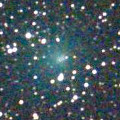
|
Now it is bright as 10.5 mag (Feb. 6, Marco Goiato). In the Northern Hemisphere, it stays observable in excellent condition after this. In the Southern Heimsphere, it will be getting lower rapidly after this, and it will be unobservable in mid March.
Date(TT) R.A. (2000) Decl. Delta r Elong. m1 Best Time(A, h)
Feb. 6 7 5.76 -3 3.0 0.514 1.428 142 10.6 21:55 ( 0, 53)
Feb. 13 6 21.41 14 43.0 0.595 1.446 130 11.0 20:45 ( 0, 71)
|
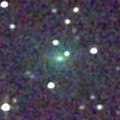
|
Brightened rapidly. Now it is very bright as 12.6 mag (Dec. 25, Ken-ichi Kadota). It will approach to Earth down to 0.46 a.u. in April, and it is expected to brighten up to 9 mag and to be observable in excellent condition. It becomes unobservable temporarily from January to February.
Date(TT) R.A. (2000) Decl. Delta r Elong. m1 Best Time(A, h)
Feb. 6 20 55.49 -14 58.7 2.082 1.104 5 11.5 5:28 (279,-13)
Feb. 13 20 51.35 -14 5.3 2.004 1.067 13 11.3 5:23 (282, -7)
|
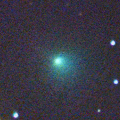
|
New periodic comet discovered in 2016. It had been predicted to return in 2024. But actually, it returned much earlier than predicted. Now it is bright as 11 mag (Jan. 16, Giuseppe Pappa). It passed the perihelion on Jan. 25. In the Southern Hemisphere, it will appear in the morning sky in early February, then it stays observable in excellent condition after that. In the Northern Hemisphere, it will never be observable after this.
Date(TT) R.A. (2000) Decl. Delta r Elong. m1 Best Time(A, h)
Feb. 6 21 17.48 -42 15.6 0.504 0.581 26 11.6 5:28 (302,-30)
Feb. 13 20 37.83 -48 34.2 0.534 0.654 37 13.0 5:23 (314,-23)
|

|
Now it is bright as 11.9 mag (Jan. 23, Marco Goiato). It stays 12 mag until March. In the Southern Hemisphere, it stays observable in good condition after this. In the Northern Hemisphere, it will never be observable after this.
Date(TT) R.A. (2000) Decl. Delta r Elong. m1 Best Time(A, h)
Feb. 6 15 20.50 -71 57.9 1.913 1.911 74 11.8 5:28 (356,-17)
Feb. 13 15 37.93 -77 56.3 1.916 1.953 77 11.9 5:23 (357,-23)
|
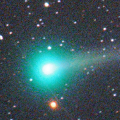
|
It brightened up to 5.6 mag in early December (Dec. 9, Marco Goiato). In mid December, it was visible at about 3 mag in the SOHO spacecraft images (Dec. 18, Hirohisa Sato). Now it is not observable. It will appear in the morning sky again in April. But then it will be fainter than 15 mag.
Date(TT) R.A. (2000) Decl. Delta r Elong. m1 Best Time(A, h)
Feb. 6 21 25.27 -3 29.6 2.258 1.312 12 11.9 18:59 ( 93,-10)
Feb. 13 21 44.28 -1 37.5 2.386 1.434 11 12.5 5:23 (264,-11)
|
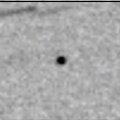
|
It will brighten up to 11.5 mag in spring. However, the condition is very bad in this apparition. It will appear in the morning low sky in March in the Southern Hemisphere, or in June in the Northern Hemisphere.
Date(TT) R.A. (2000) Decl. Delta r Elong. m1 Best Time(A, h)
Feb. 6 19 47.69 -18 53.7 2.364 1.494 21 12.6 5:28 (292, -2)
Feb. 13 20 11.63 -18 20.9 2.327 1.472 23 12.3 5:23 (291, -2)
|
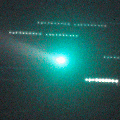
|
It brightened very rapidly in early December. Now it is very bright as 11.2 mag (Feb. 2, Chris Wyatt). In addition, Michael Jager observed two more components of 15-16 mag. It stays observable for a long time in this apparition.
Date(TT) R.A. (2000) Decl. Delta r Elong. m1 Best Time(A, h)
Feb. 6 3 13.63 -1 42.6 0.605 1.143 88 12.4 18:59 ( 20, 52)
Feb. 13 3 55.81 -0 5.8 0.669 1.215 92 13.3 19:05 ( 17, 54)
|
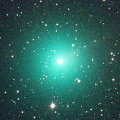
|
It brightened up to 7.3 mag in November (Nov. 7, Marco Goiato). Now it is fading. But it is bright as 11.9 mag still now (Jan. 29, Thomas Lehmann). In the Northern Hemisphere, it stays observable in excellent condition for a long time. In the Southern Hemisphere, it stays locating extremely low after this.
Date(TT) R.A. (2000) Decl. Delta r Elong. m1 Best Time(A, h)
Feb. 6 5 39.90 48 41.6 1.201 1.941 124 12.7 20:34 (180, 76)
Feb. 13 5 49.38 48 28.6 1.324 2.011 120 13.1 20:16 (180, 77)
|
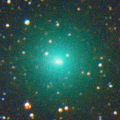
|
It brightened up to 8.2 mag in autumn (Oct. 13, Chris Wyatt). Now it is fading. It has already faded down to 12.3 mag (Jan. 13, Chris Wyatt). In the Southern Hemisphere, it is already unobservable. In the Northern Hemisphere, it will be unobservable in late February.
Date(TT) R.A. (2000) Decl. Delta r Elong. m1 Best Time(A, h)
Feb. 6 23 43.59 -4 13.4 2.615 1.928 37 13.0 18:59 ( 72, 18)
Feb. 13 23 59.01 -2 24.8 2.705 1.974 34 13.3 19:05 ( 76, 15)
|
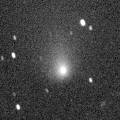
|
First return of a new periodic comet which brightened up to 13 mag in 2009. It brightened up to 11.7 mag in January (Jan. 10, Marco Goiato). Now it is fading. But it is still bright as 13.6 mag (Jan. 30, Thomas Lehmann). It stays observable in good condition while the comet will be fading after this.
Date(TT) R.A. (2000) Decl. Delta r Elong. m1 Best Time(A, h)
Feb. 6 5 53.52 19 57.5 0.523 1.388 131 13.4 20:48 ( 0, 75)
Feb. 13 6 10.80 22 33.7 0.573 1.416 128 13.8 20:38 ( 0, 78)
|
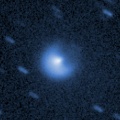
|
Now it is 12.7 mag (Jan. 31, Thomas Lehmann). In the Southern Hemisphere, it will be unobservable in late February.
Date(TT) R.A. (2000) Decl. Delta r Elong. m1 Best Time(A, h)
Feb. 6 2 21.66 23 52.2 5.877 5.855 83 13.6 18:59 ( 71, 65)
Feb. 13 2 24.66 23 54.8 5.989 5.857 77 13.6 19:05 ( 78, 59)
|
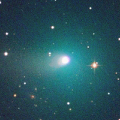
|
Brightened rapidly, and it brightened up to 9.7 mag in November (Nov. 15, Chris Wyatt). Now it is fading. But it is bright as 12.8 mag still now (Feb. 2, Chris Wyatt). In the Northern Hemisphere, it stays observable in good condition for a long time. In the Southern Hemisphere, it locates extremely low after this.
Date(TT) R.A. (2000) Decl. Delta r Elong. m1 Best Time(A, h)
Feb. 6 2 56.32 37 31.8 1.189 1.613 95 13.8 18:59 (106, 76)
Feb. 13 3 18.26 38 41.7 1.278 1.656 93 14.4 19:05 (109, 74)
|
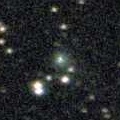
|
Now it is 13.6 mag (Jan. 29, Thomas Lehmann). It will brighten up to 11 mag in winter in 2022. In the Northern Hemisphere, it stays observable in good condition for a long time. In the Southern Hemisphere, it is not observable until November.
Date(TT) R.A. (2000) Decl. Delta r Elong. m1 Best Time(A, h)
Feb. 6 0 52.22 53 22.5 4.672 4.653 82 13.9 18:59 (134, 52)
Feb. 13 1 2.19 52 53.4 4.709 4.615 78 13.8 19:05 (133, 48)
|
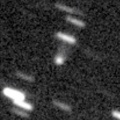
|
It will brighten up to 13 mag from spring to summer. In the Southern Hemisphere, it stays observable in good condition for a long time. In the Northern Hemisphere, it is not observable until July in 2022.
Date(TT) R.A. (2000) Decl. Delta r Elong. m1 Best Time(A, h)
Feb. 6 17 19.45 -53 55.4 4.204 3.803 59 13.9 5:28 (337, -6)
Feb. 13 17 32.14 -55 27.5 4.110 3.783 64 13.8 5:23 (339, -7)
|
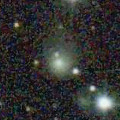
|
Now it is 14.7 mag (Jan. 24, Thomas Lehmann). It is expected to be observable at 5-6 mag for a long time from 2022 to 2023. In the Northern Hemisphere, it is not observable at the high light from 2022 summer to 2023 summer. In the Southern Hemisphere, it is not observable now. But it will be observable in good condition at the high light.
Date(TT) R.A. (2000) Decl. Delta r Elong. m1 Best Time(A, h)
Feb. 6 18 13.25 35 34.6 7.477 7.157 67 13.9 5:28 (253, 46)
Feb. 13 18 16.59 35 53.6 7.381 7.102 69 13.9 5:23 (254, 49)
|
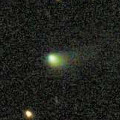
|
Now it is 15.5 mag (Jan. 19, Slooh.com Chile Observatory, La Dehesa). It stays 13-14 mag from 2020 to 2021. It will be observable in good condition after this in the Southern Hemisphere. It locates somewhat low in the Northern Hemisphere.
Date(TT) R.A. (2000) Decl. Delta r Elong. m1 Best Time(A, h)
Feb. 6 17 46.32 -21 38.5 3.393 2.865 50 14.2 5:28 (313, 17)
Feb. 13 17 57.32 -22 1.2 3.317 2.864 54 14.1 5:23 (316, 18)
|
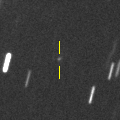
|
Brightening very rapidly. Now it is very bright as 12.6 mag (Feb. 6, Alan Hale). Now it is approaching to Earth down to 0.4 a.u. In the Northern Hemisphere, it stays observable in excellent condition. In the Southern Hemisphere, it is not observable until mid February.
Date(TT) R.A. (2000) Decl. Delta r Elong. m1 Best Time(A, h)
Feb. 6 10 32.02 69 33.0 0.481 1.321 124 14.8 1:40 (180, 56)
Feb. 13 6 27.32 58 30.2 0.435 1.271 121 14.3 20:44 (180, 68)
|
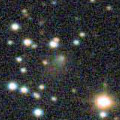
|
Now it is 16.5 mag (Feb. 3, Katsumi Yoshimoto). It stays 14-15 mag until spring. But actually, it is fainter than this ephemeris recently. In the Northern Hemisphere, it stays observable in excellent condition. In the Southern Hemisphere, it stays extremely low until spring.
Date(TT) R.A. (2000) Decl. Delta r Elong. m1 Best Time(A, h)
Feb. 6 1 53.55 25 33.9 1.228 1.416 78 14.7 18:59 ( 80, 60)
Feb. 13 2 17.80 23 58.5 1.231 1.382 76 14.6 19:05 ( 80, 58)
|
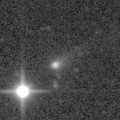
|
Now it is 14.5 mag (Jan. 29, Thomas Lehmann). It is expected to brighten up to 12.5 mag from spring to summer, and it stays observable in good condition for a long time.
Date(TT) R.A. (2000) Decl. Delta r Elong. m1 Best Time(A, h)
Feb. 6 13 50.17 28 9.2 2.148 2.734 116 14.8 4:46 ( 0, 83)
Feb. 13 13 55.82 28 58.8 2.045 2.684 120 14.6 4:24 ( 0, 84)
|
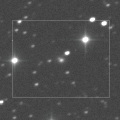
|
Now it is 14.4 mag (Jan. 20, iTelescope Observatory, Siding Spring). It will brighten up to 13.5 mag in spring. In the Southern Hemisphere, it stays observable in good condition for a long time, although it became unobservable temporarily in December. In the Northern Hemisphere, it will be getting higher and becoming observable slowly.
Date(TT) R.A. (2000) Decl. Delta r Elong. m1 Best Time(A, h)
Feb. 6 17 51.33 -40 46.1 3.954 3.422 51 14.8 5:28 (325, 1)
Feb. 13 17 51.33 -40 32.0 3.834 3.409 57 14.7 5:23 (328, 4)
|
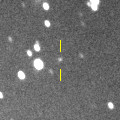
|
Now it is 14.2 mag and visible visually (Jan. 25, Chris Wyatt). It is expected to brighten up to 11.5 mag in 2022. It is observable in excellent condition in the Southern Hemisphere. In the Northern Hemisphere, it is observable from autumn to winter, but it locating extremely low.
Date(TT) R.A. (2000) Decl. Delta r Elong. m1 Best Time(A, h)
Feb. 6 8 10.19 -40 5.2 5.210 5.793 122 14.8 23:02 ( 0, 15)
Feb. 13 8 7.11 -39 36.1 5.170 5.756 122 14.8 22:32 ( 0, 15)
|

|
It had been observed as 8-9 mag for a long time in 2020. Now it is fading. It has already faded down to 16.6 mag (Jan. 23, Slooh.com Chile Observatory, La Dehesa). It will be observable in good condition after this in the Southern Hemisphere. It locates extremely low after this in the Northern Hemisphere.
Date(TT) R.A. (2000) Decl. Delta r Elong. m1 Best Time(A, h)
Feb. 6 17 26.50 -31 8.6 4.207 3.726 54 14.9 5:28 (323, 12)
Feb. 13 17 31.71 -32 4.2 4.177 3.792 60 14.9 5:23 (326, 13)
|
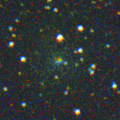
|
Now it is 15.8 mag (Jan. 16, Slooh.com Canary Islands Observatory). It is not observable until June.
Date(TT) R.A. (2000) Decl. Delta r Elong. m1 Best Time(A, h)
Feb. 6 22 24.40 -5 23.8 2.989 2.083 19 15.0 18:59 ( 83, 1)
Feb. 13 22 38.49 -3 24.6 3.010 2.081 16 15.0 19:05 ( 87, -2)
|

|
Now it is 15.9 mag (Nov. 10, Toshihiko Ikemura, Hirohisa Sato). It will stay at 14 mag for a long time from 2021 to 2022. In the Northern Hemisphere, it stays observable in good condition while brightening gradually, although it became unobservable temporarily in December. In the Southern Hemisphere, it will appear in the morning sky soon. Then it will be observable in good condition.
Date(TT) R.A. (2000) Decl. Delta r Elong. m1 Best Time(A, h)
Feb. 6 18 16.34 3 10.8 6.002 5.403 48 15.2 5:28 (288, 29)
Feb. 13 18 18.63 2 56.7 5.904 5.383 53 15.1 5:23 (292, 33)
|
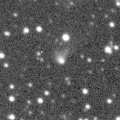
|
Now it is 15.8 mag (Jan. 14, Slooh.com Chile Observatory, La Dehesa). It stays 14-15 mag until the end of 2021. In the Southern Hemisphere, it stays observable in good condition for a long time, although it becomes extremely low temporarily from January to February. In the Northern Hemisphere, it is not observable until June.
Date(TT) R.A. (2000) Decl. Delta r Elong. m1 Best Time(A, h)
Feb. 6 21 42.88 -49 29.9 5.124 4.343 34 15.2 18:59 ( 48,-29)
Feb. 13 21 53.40 -48 15.9 5.112 4.338 34 15.2 19:05 ( 51,-32)
|
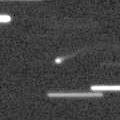
|
First return of a new periodic comet which brightened up to 14-15 mag in 2006. Now it is 15.9 mag (Jan. 17, D. Buczynski). It will brighten up to 15-16 mag from February to March, and will be observable in good condition.
Date(TT) R.A. (2000) Decl. Delta r Elong. m1 Best Time(A, h)
Feb. 6 12 50.89 5 53.6 0.977 1.757 127 15.5 3:47 ( 0, 61)
Feb. 13 13 0.01 7 35.0 0.942 1.763 132 15.5 3:28 ( 0, 62)
|
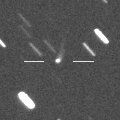
|
Now it is 16.3 mag (Nov. 9, Toshihiko Ikemura, Hirohisa Sato). It will brighten up to 14.5 mag from spring to summer. In the Southern Hemisphere, it stays observable in excellent condition for a long time, although it becomes extremely low temporarily from January to February. In the Northern Hemisphere, it is not observable after this.
Date(TT) R.A. (2000) Decl. Delta r Elong. m1 Best Time(A, h)
Feb. 6 22 6.58 -37 49.3 3.629 2.762 24 15.7 18:59 ( 57,-20)
Feb. 13 22 15.07 -38 35.7 3.596 2.742 25 15.6 19:05 ( 59,-25)
|

|
Now it is not observable. It will be observable in June. But it will fade down to 17 mag at that time.
Date(TT) R.A. (2000) Decl. Delta r Elong. m1 Best Time(A, h)
Feb. 6 21 13.42 -21 20.2 2.608 1.630 5 15.7 5:28 (283,-20)
Feb. 13 21 34.44 -19 6.2 2.589 1.611 6 15.7 5:23 (281,-19)
|

|
Now it is 14.9 mag (Jan. 22, Thomas Lehmann). In the Northern Hemisphere, it stays observable for a long time while it is getting fainter slowly. In the Southern Hemisphere, it will never be observable again.
Date(TT) R.A. (2000) Decl. Delta r Elong. m1 Best Time(A, h)
Feb. 6 16 38.40 63 5.4 5.023 5.207 95 15.8 5:28 (205, 56)
Feb. 13 16 37.94 63 56.4 5.050 5.254 96 15.8 5:23 (201, 57)
|
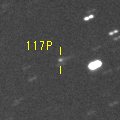
|
Now it is 16.8 mag (Jan. 10, Toshihiko Ikemura, Hirohisa Sato). It will brighten up to 13 mag in 2022. In 2021, it is observable at 15-16 mag in good condition.
Date(TT) R.A. (2000) Decl. Delta r Elong. m1 Best Time(A, h)
Feb. 6 13 44.36 -2 54.9 3.354 3.829 111 16.1 4:40 ( 0, 52)
Feb. 13 13 45.30 -2 53.3 3.243 3.813 118 16.0 4:14 ( 0, 52)
|
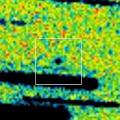
|
It will brighten up to 13 mag from spring to summer. In the Southern Hemisphere, it stays observable in good condition for a long time. In the Northern Hemisphere, it is not observable until September when it fades down to 15 mag.
Date(TT) R.A. (2000) Decl. Delta r Elong. m1 Best Time(A, h)
Feb. 6 18 52.39 -24 27.7 2.949 2.218 35 16.3 5:28 (304, 5)
Feb. 13 19 6.52 -25 56.7 2.825 2.155 39 16.1 5:23 (306, 5)
|
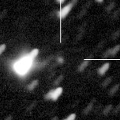
|
Now it is 16.5 mag (Jan. 14, M. Mattiazzo). It brightens up to 15 mag from spring to summer. In the Southern Hemisphere, it stays observable in good condition until June. In the Northern Hemisphere, it is observable in the low sky from March to May.
Date(TT) R.A. (2000) Decl. Delta r Elong. m1 Best Time(A, h)
Feb. 6 5 57.95 -60 57.0 2.482 2.728 93 16.3 20:50 ( 0, -6)
Feb. 13 5 55.03 -58 18.1 2.412 2.674 94 16.2 20:20 ( 0, -3)
|
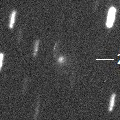
|
It brightened rapidly and became brighter than expected. Now it is 16.3 mag (Jan. 15, Toshihiko Ikemura, Hirohisa Sato). It is observable in good condition in the Northern Hemisphere. It locates somewhat low in the Southern Hemisphere.
Date(TT) R.A. (2000) Decl. Delta r Elong. m1 Best Time(A, h)
Feb. 6 3 30.90 22 58.7 1.518 1.934 98 16.3 18:59 ( 34, 76)
Feb. 13 3 44.23 22 25.6 1.597 1.945 94 16.4 19:05 ( 47, 73)
|
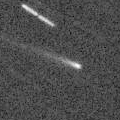
|
It brightened very rapidly. Now it is 16.5 mag, much brighter than expected (Jan. 2, D. Buczynski). It stays 16.5 mag until February. It is observable in excellent condition in the Northern Hemisphere. It locates somewhat low in the Southern Hemisphere.
Date(TT) R.A. (2000) Decl. Delta r Elong. m1 Best Time(A, h)
Feb. 6 2 29.76 16 13.2 1.184 1.448 83 16.4 18:59 ( 55, 62)
Feb. 13 2 50.59 18 31.9 1.230 1.460 81 16.4 19:05 ( 63, 61)
|
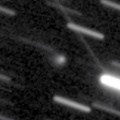
|
Now it is 15.8 mag (Jan. 14, Toshihiko Ikemura, Hirohisa Sato). It is observable at 16 mag from 2020 to 2021. In the Southern Hemisphere, it is not observable until summer.
Date(TT) R.A. (2000) Decl. Delta r Elong. m1 Best Time(A, h)
Feb. 6 22 33.79 44 47.9 6.333 5.949 62 16.4 18:59 (127, 28)
Feb. 13 22 38.13 44 10.9 6.398 5.948 58 16.4 19:05 (129, 23)
|
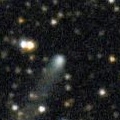
|
Now it is 15.4 mag (Jan. 19, D. Buczynski). It stays 15-16 mag for a long time until 2021. In the Northern Hemisphere, it stays observable in good condition for a long time, although it becomes very low temporarily from December to January. In the Southern Hemisphere, it will be observable in the extremely low sky only in next spring.
Date(TT) R.A. (2000) Decl. Delta r Elong. m1 Best Time(A, h)
Feb. 6 19 10.31 27 22.8 5.385 4.857 53 16.4 5:28 (257, 31)
Feb. 13 19 13.35 28 43.6 5.362 4.879 56 16.4 5:23 (257, 36)
|
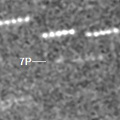
|
Now it is 18.3 mag, much fainter than predicted (Jan. 18, F. Kugel, J. Nicolas). It will brighten up to 11 mag from May to August. In the Southern Hemisphere, it stays observable in excellent condition for a long time. In the Northern Hemisphere, it stays observable in good condition for a while. But it becomes extremely low after July.
Date(TT) R.A. (2000) Decl. Delta r Elong. m1 Best Time(A, h)
Feb. 6 15 23.68 9 58.2 1.457 1.779 91 16.7 5:28 (332, 62)
Feb. 13 15 40.97 9 51.8 1.357 1.726 93 16.4 5:23 (335, 63)
|
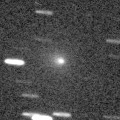
|
Brightened very rapidly. Now it is 15.5-16.0 mag (Jan. 20, Michael Jager). It stays observable at 16 mag in good condition for a while. It locates low in the Southern Hemisphere.
Date(TT) R.A. (2000) Decl. Delta r Elong. m1 Best Time(A, h)
Feb. 6 3 28.39 27 11.3 1.458 1.888 99 16.5 18:59 ( 47, 79)
Feb. 13 3 42.46 27 27.6 1.535 1.901 95 16.5 19:05 ( 62, 76)
|
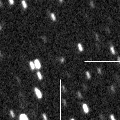
|
Now it is 16.8 mag (Jan. 17, Toshihiko Ikemura, Hirohisa Sato). In the Northern Hemisphere, it stays observable at 15 mag for a long time from spring to early 2022. In the Southern Hemisphere, it is not observable until the end of 2021.
Date(TT) R.A. (2000) Decl. Delta r Elong. m1 Best Time(A, h)
Feb. 6 20 0.45 47 13.9 3.854 3.557 65 16.7 5:28 (231, 30)
Feb. 13 20 4.61 48 31.8 3.807 3.522 65 16.6 5:23 (231, 33)
|
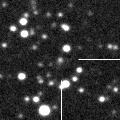
|
Now it is 16.6 mag (Nov. 9, Toshihiko Ikemura, Hirohisa Sato). It stays at 16-17 mag from 2020 to 2021. In the Northern Hemisphere, it stays observable in good condition for a long time. It is not observable in the Southern Hemisphere.
Date(TT) R.A. (2000) Decl. Delta r Elong. m1 Best Time(A, h)
Feb. 6 19 32.04 32 40.8 9.355 8.821 54 16.8 5:28 (249, 29)
Feb. 13 19 34.78 33 22.4 9.330 8.820 56 16.8 5:23 (250, 33)
|

|
Five apparitions of this comet was confirmed in 1999, 2004, 2008, 2012 and 2016. It approached to Sun down to 0.04 a.u. on Jan. 17. It may be observed on the ground in December and February.
Date(TT) R.A. (2000) Decl. Delta r Elong. m1 Best Time(A, h)
Feb. 6 23 52.11 3 21.6 0.449 0.722 42 16.8 18:59 ( 76, 25)
Feb. 13 1 39.89 14 44.7 0.478 0.892 64 17.9 19:05 ( 74, 47)
|
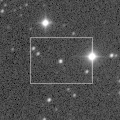
|
Now it is 16.1 mag (Jan. 9, Toshihiko Ikemura, Hirohisa Sato). It is bright as 14.7 mag visually (Jan. 11, Sandor Szabo). It will be fading after this, and will be fainter than 18 mag in April. In the Northern Hemisphere, it stays observable in good condition for a long time after this. In the Southern Hemisphere, it will never be unobservable after this.
Date(TT) R.A. (2000) Decl. Delta r Elong. m1 Best Time(A, h)
Feb. 6 1 15.89 29 5.3 1.407 1.459 72 16.8 18:59 ( 93, 54)
Feb. 13 1 36.80 32 9.9 1.479 1.496 71 17.0 19:05 ( 99, 53)
|
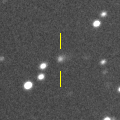
|
It brightened up to 16.1 mag in last winter (Mar. 18, Toshihiko Ikemura, Hirohisa Sato). Now it is 17.6 mag (Jan. 17, Toshihiko Ikemura, Hirohisa Sato). In 2021, it stays observable at 17 mag in good condition until summer.
Date(TT) R.A. (2000) Decl. Delta r Elong. m1 Best Time(A, h)
Feb. 6 13 14.63 -20 22.7 6.407 6.833 111 16.9 4:11 ( 0, 35)
Feb. 13 13 14.78 -20 14.3 6.318 6.846 118 16.9 3:43 ( 0, 35)
|
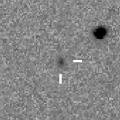
|
Now it is 16.8 mag (Jan. 15, Toshihiko Ikemura, Hirohisa Sato). It is expected to brighten up to 13 mag in 2022. In the Southern Hemisphere, it stays observable in good condition for a long time. In the Northern Hemisphere, it stays observable until June when it brightens up to 16 mag. But it will not be observable at the high light.
Date(TT) R.A. (2000) Decl. Delta r Elong. m1 Best Time(A, h)
Feb. 6 14 8.45 -17 24.5 5.222 5.499 101 17.0 5:04 ( 0, 38)
Feb. 13 14 6.03 -17 57.2 5.056 5.452 108 16.9 4:34 ( 0, 37)
|

|
Now it is 17.2 mag (Jan. 11, iTelescope Observatory, Siding Spring). It stays observable at 16-17 mag from 2021 to 2022.
Date(TT) R.A. (2000) Decl. Delta r Elong. m1 Best Time(A, h)
Feb. 6 14 28.92 -25 58.0 4.900 5.062 93 17.0 5:25 ( 0, 29)
Feb. 13 14 29.76 -25 23.9 4.763 5.042 100 16.9 4:58 ( 0, 29)
|

|
Now it is 16.3 mag (Oct. 17, ATLAS-MLO, Mauna Loa). It will be fading slowly.
Date(TT) R.A. (2000) Decl. Delta r Elong. m1 Best Time(A, h)
Feb. 6 18 26.31 -19 43.6 7.996 7.281 41 16.9 5:28 (305, 12)
Feb. 13 18 27.46 -19 24.8 7.929 7.303 47 16.9 5:23 (308, 16)
|
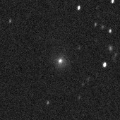
|
Now it is 16.6 mag (Sept. 19, D. Buczynski). It is observable at 16.5-17 mag from spring in 2020 to summer in 2021.
Date(TT) R.A. (2000) Decl. Delta r Elong. m1 Best Time(A, h)
Feb. 6 17 50.91 -10 7.6 5.253 4.692 50 17.2 5:28 (304, 25)
Feb. 13 17 51.83 -10 31.4 5.161 4.701 57 17.1 5:23 (309, 28)
|
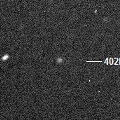
|
First return of a new periodic comet which brightened up to 16 mag from 2003 to 2004. Now it is 16.8 mag (Jan. 13, Toshihiko Ikemura, Hirohisa Sato). It will brighten up to 16 mag in next winter.
Date(TT) R.A. (2000) Decl. Delta r Elong. m1 Best Time(A, h)
Feb. 6 2 41.88 -15 8.2 4.417 4.311 77 17.3 18:59 ( 25, 36)
Feb. 13 2 45.65 -14 0.8 4.490 4.296 72 17.3 19:05 ( 34, 34)
|
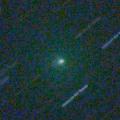
|
It brightened very rapidly up to 12.5 mag in early December (Dec. 7, Michael Jager). Now it is fading. It has already faded down to 16.0 mag (Feb. 1, Thomas Lehmann). It stays observable in excellent condition for a while.
Date(TT) R.A. (2000) Decl. Delta r Elong. m1 Best Time(A, h)
Feb. 6 3 51.55 7 8.9 1.092 1.592 99 17.3 18:59 ( 7, 62)
Feb. 13 4 9.05 7 36.5 1.175 1.629 97 17.8 19:05 ( 15, 62)
|

|
Now it is 17.7 mag (Sept. 14, Slooh.com Chile Observatory, La Dehesa). It will brighten up to 16.5 mag in summer.
Date(TT) R.A. (2000) Decl. Delta r Elong. m1 Best Time(A, h)
Feb. 6 17 18.02 -36 23.3 5.587 5.114 56 17.3 5:28 (327, 9)
Feb. 13 17 22.67 -35 57.7 5.474 5.098 62 17.3 5:23 (330, 11)
|
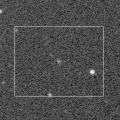
|
Now it is 18.2 mag (Feb. 2, Thomas Lehmann). It is expected to brighten up to 12 mag in 2022. In the Southern Hemisphere, it stays observable in good condition for a long time. In the Northern Hemisphere, it locates extremely low until mid February, then it becomes unobservable until 2022.
Date(TT) R.A. (2000) Decl. Delta r Elong. m1 Best Time(A, h)
Feb. 6 2 43.76 -47 2.3 6.344 6.125 72 17.4 18:59 ( 14, 6)
Feb. 13 2 42.43 -46 22.6 6.352 6.075 69 17.4 19:05 ( 20, 5)
|
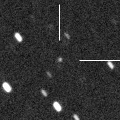
|
Now it is 17.5 mag (Jan. 15, Toshihiko Ikemura, Hirohisa Sato). Although it is an asteroid, it is brightening rapidly. It may brighten up to 11 mag in 2023. In the Northern Hemisphere, it stays observable in good condition for a long time. In the Southern Hemisphere, it is not observable now. It will appear in mid March, but it stays extremely low after that.
Date(TT) R.A. (2000) Decl. Delta r Elong. m1 Best Time(A, h)
Feb. 6 18 31.16 38 13.0 7.752 7.416 66 17.5 5:28 (248, 43)
Feb. 13 18 33.05 38 45.8 7.668 7.371 68 17.4 5:23 (248, 47)
|
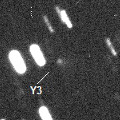
|
Now it is 17.5 mag (Jan. 17, Toshihiko Ikemura, Hirohisa Sato). It stays 17.5 mag and observable in good condition until March.
Date(TT) R.A. (2000) Decl. Delta r Elong. m1 Best Time(A, h)
Feb. 6 14 51.51 -1 12.4 1.800 2.143 96 17.6 5:28 (352, 53)
Feb. 13 14 55.84 3 16.3 1.728 2.174 102 17.6 5:23 (359, 58)
|
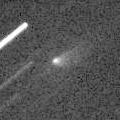
|
First return of a new periodic comet which brightened up to 17 mag in 2013. Now it is 17.8 mag (Jan. 13, Toshihiko Ikemura, Hirohisa Sato). It will be fainter than 18 mag in late February.
Date(TT) R.A. (2000) Decl. Delta r Elong. m1 Best Time(A, h)
Feb. 6 13 51.08 -1 18.3 0.515 1.263 110 17.6 4:47 ( 0, 54)
Feb. 13 13 52.82 -3 37.0 0.522 1.306 116 17.8 4:21 ( 0, 51)
|
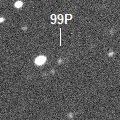
|
Now it is 18.3 mag (Jan. 14, J. L. Virlichie, P. Traverse). It stays 17-18 mag for a long time from 2021 to 2023.
Date(TT) R.A. (2000) Decl. Delta r Elong. m1 Best Time(A, h)
Feb. 6 11 6.70 10 4.4 4.073 4.972 153 17.7 2:03 ( 0, 65)
Feb. 13 11 3.88 10 22.2 4.021 4.964 160 17.6 1:33 ( 0, 65)
|
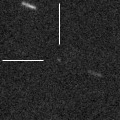
|
Now it is 17.5 mag (Jan. 15, Catalina Sky Survey). Although it is an asteroid, it is brightening rapidly. It stays 17-18 mag for a long time from 2021 to 2022. In the Southern Hemisphere, it stays observable in good condition for a long time. In the Northern Hemisphere, it is observable only until May.
Date(TT) R.A. (2000) Decl. Delta r Elong. m1 Best Time(A, h)
Feb. 6 9 8.31 -5 46.6 4.793 5.721 158 17.8 0:05 ( 0, 49)
Feb. 13 9 1.46 -6 6.2 4.778 5.703 157 17.7 23:26 ( 0, 49)
|
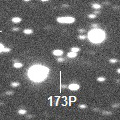
|
Now it is 17.0 mag (Jan. 10, Toshihiko Ikemura, Hirohisa Sato). It is observable at 17-18 mag for a long time from late 2019 to early 2021. It will fade out before it passes the perihelion.
Date(TT) R.A. (2000) Decl. Delta r Elong. m1 Best Time(A, h)
Feb. 6 5 19.05 19 55.4 3.802 4.420 123 17.8 20:13 ( 0, 75)
Feb. 13 5 18.71 20 15.2 3.887 4.411 116 17.9 19:45 ( 0, 75)
|
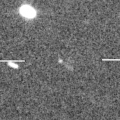
|
Now it is 17.2 mag (Jan. 17, D. Buczynski). It is expected to brighten up to 10 mag in 2023. In the Northern Hemisphere, it stays observable in good condition until 2023 autumn. In the Southern Hemipshere, it stays extremely low until mid July, then it becomes unobservable for a while. But it becomes observable in good condition after 2023 summer.
Date(TT) R.A. (2000) Decl. Delta r Elong. m1 Best Time(A, h)
Feb. 6 13 16.54 30 47.0 7.424 8.016 123 17.9 4:12 ( 0, 86)
Feb. 13 13 14.27 31 40.6 7.305 7.965 129 17.8 3:43 ( 0, 87)
|
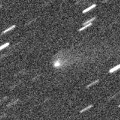
|
Now it is 16.4 mag (Jan. 22, Thomas Lehmann). It stays observable in good condition. But it will be fading after this, and will be fainter than 18 mag in February. It locates somewhat low in the Southern Hemisphere.
Date(TT) R.A. (2000) Decl. Delta r Elong. m1 Best Time(A, h)
Feb. 6 7 56.80 23 56.9 1.765 2.709 159 17.9 22:49 ( 0, 79)
Feb. 13 7 52.07 24 21.2 1.842 2.747 150 18.1 22:17 ( 0, 79)
|
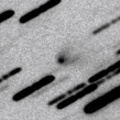
|
Now it is 17.3 mag (Jan. 9, Toshihiko Ikemura, Hirohisa Sato). It stays observable in good condition for a while, but it will be fading after this.
Date(TT) R.A. (2000) Decl. Delta r Elong. m1 Best Time(A, h)
Feb. 6 7 9.68 26 52.2 1.623 2.515 148 17.9 22:03 ( 0, 82)
Feb. 13 7 7.30 27 16.2 1.709 2.549 140 18.1 21:33 ( 0, 82)
|
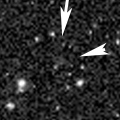
|
It stays 17-18 mag for a long time until 2026. In the Southern Hemisphere, it stays sobservable in good condition for a long time. It is not observable in the Northern Hemisphere.
Date(TT) R.A. (2000) Decl. Delta r Elong. m1 Best Time(A, h)
Feb. 6 9 34.04 -57 9.8 11.297 11.625 107 17.9 0:30 ( 0, -2)
Feb. 13 9 28.83 -57 19.3 11.247 11.608 109 17.9 23:53 ( 0, -2)
|
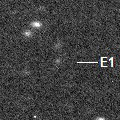
|
First return of a new periodic comet which brightened up to 16 mag in 2014. Now it is 18.7 mag (Jan. 17, Toshihiko Ikemura, Hirohisa Sato). It will brighten up to 17 mag in spring, and it will be observable in good condition.
Date(TT) R.A. (2000) Decl. Delta r Elong. m1 Best Time(A, h)
Feb. 6 13 0.66 12 15.6 1.749 2.462 126 18.1 3:57 ( 0, 67)
Feb. 13 13 1.80 12 21.2 1.661 2.438 132 17.9 3:30 ( 0, 67)
|
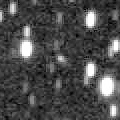
|
Now it is 18.0 mag (Jan. 13, Toshihiko Ikemura, Hirohisa Sato). It stays 18 mag until 2022. It stays observable in good condition in the Northern Hemisphere. It is not observable in the Southern Hemisphere.
Date(TT) R.A. (2000) Decl. Delta r Elong. m1 Best Time(A, h)
Feb. 6 0 47.70 79 25.6 6.604 6.830 99 17.9 18:59 (169, 41)
Feb. 13 0 59.16 79 13.7 6.650 6.827 96 18.0 19:05 (169, 41)
|
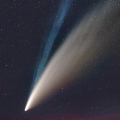
|
It approached to Sun down to 0.29 a.u. on July 3, and it brightened up to 0.6 mag (Alan Hale). It had been fainter than 15.0 mag in October (Oct. 12, Mitsunori Tsumura). Appearing in the morning sky. But it is fainter than 19.0 mag (Jan. 14, Mitsunori Tsumura). It must be already extremely faint.
Date(TT) R.A. (2000) Decl. Delta r Elong. m1 Best Time(A, h)
Feb. 6 16 40.65 -25 30.1 4.007 3.700 65 20.5 5:28 (329, 22)
Feb. 13 16 41.08 -25 54.2 3.972 3.785 71 20.7 5:23 (334, 24)
|
|
![]()
 C/2018 N2 ( ASASSN )
C/2018 N2 ( ASASSN ) 117P/Helin-Roman-Alu 1
117P/Helin-Roman-Alu 1 C/2020 K5 ( PanSTARRS )
C/2020 K5 ( PanSTARRS ) C/2021 A7 ( NEOWISE )
C/2021 A7 ( NEOWISE ) 277P/LINEAR
277P/LINEAR P/2020 T3 ( PanSTARRS )
P/2020 T3 ( PanSTARRS ) C/2019 T3 ( ATLAS )
C/2019 T3 ( ATLAS ) C/2019 K7 ( Smith )
C/2019 K7 ( Smith ) 7P/Pons-Winnecke
7P/Pons-Winnecke P/2020 U2 ( PanSTARRS )
P/2020 U2 ( PanSTARRS ) C/2020 M5 ( ATLAS )
C/2020 M5 ( ATLAS ) C/2019 O3 ( Palomar )
C/2019 O3 ( Palomar ) 323P/SOHO
323P/SOHO 162P/Siding Spring
162P/Siding Spring C/2019 C1 ( ATLAS )
C/2019 C1 ( ATLAS ) C/2020 Y2 ( ATLAS )
C/2020 Y2 ( ATLAS ) C/2020 H6 ( ATLAS )
C/2020 H6 ( ATLAS ) C/2017 U7 ( PanSTARRS )
C/2017 U7 ( PanSTARRS ) C/2017 Y2 ( PanSTARRS )
C/2017 Y2 ( PanSTARRS ) 402P/2020 Q3 ( LINEAR )
402P/2020 Q3 ( LINEAR ) 11P/Tempel-Swift-LINEAR
11P/Tempel-Swift-LINEAR C/2020 O2 ( Amaral )
C/2020 O2 ( Amaral ) C/2020 R7 ( ATLAS )
C/2020 R7 ( ATLAS ) A/2019 U5
A/2019 U5 C/2020 Y3 ( ATLAS )
C/2020 Y3 ( ATLAS ) 405P/2020 U1 ( Lemmon )
405P/2020 U1 ( Lemmon ) 99P/Kowal 1
99P/Kowal 1 A/2020 F7
A/2020 F7 173P/Mueller 5
173P/Mueller 5 C/2020 V2 ( ZTF )
C/2020 V2 ( ZTF ) 84P/Giclas
84P/Giclas 178P/Hug-Bell
178P/Hug-Bell C/2019 E3 ( ATLAS )
C/2019 E3 ( ATLAS ) P/2020 W4 ( Larson )
P/2020 W4 ( Larson ) C/2020 P3 ( ATLAS )
C/2020 P3 ( ATLAS ) C/2020 F3 ( NEOWISE )
C/2020 F3 ( NEOWISE )![]()



























































